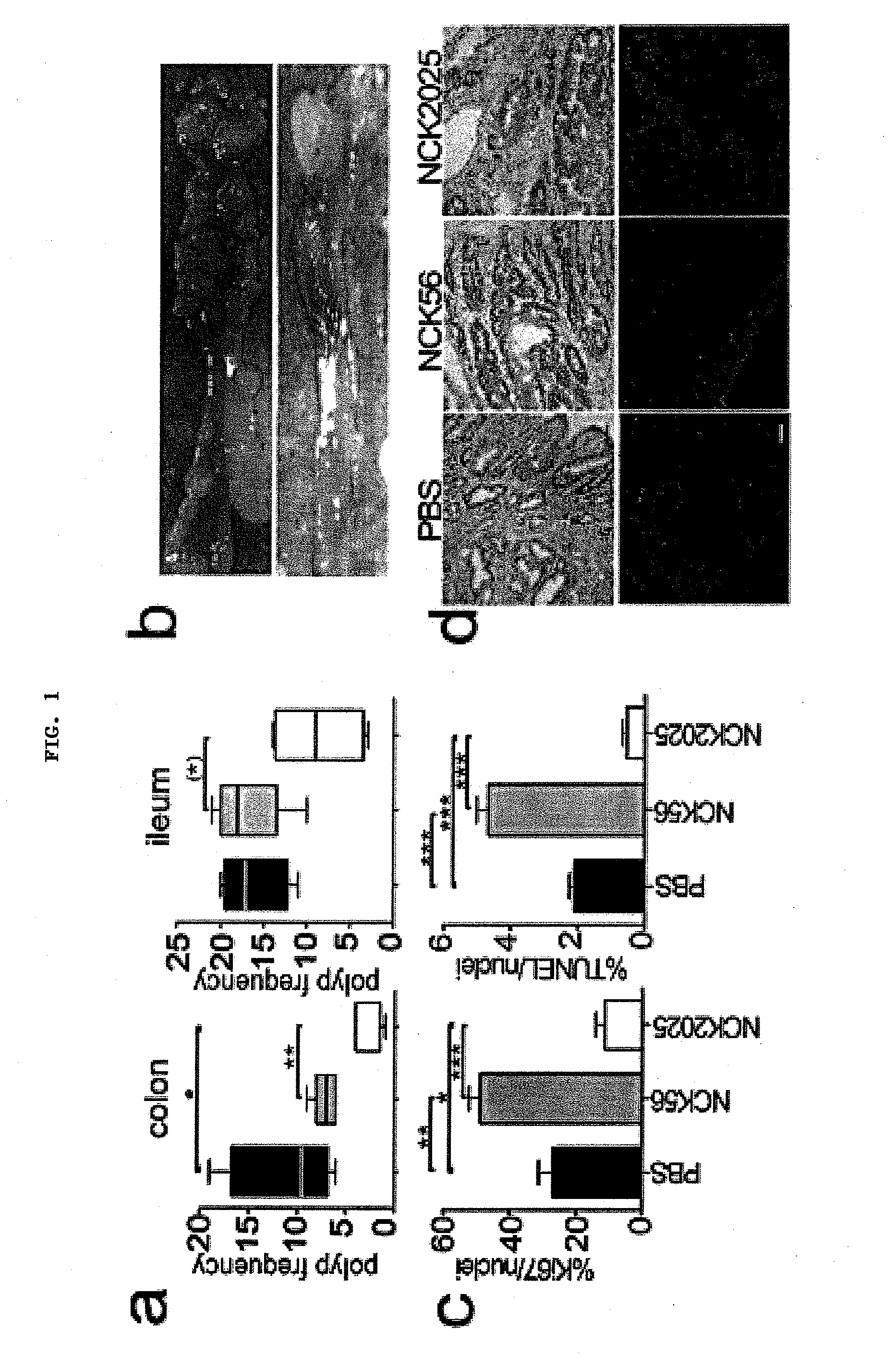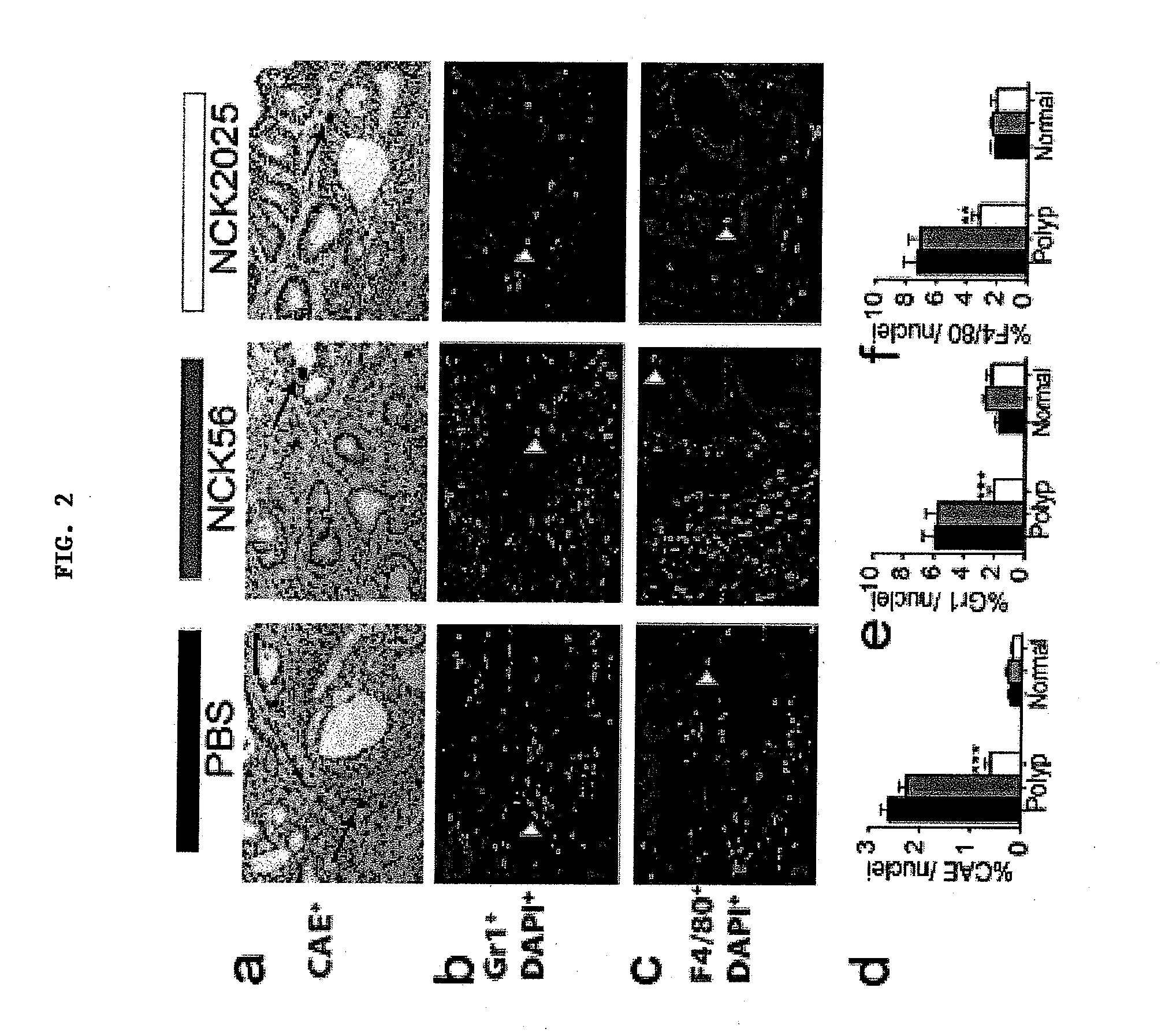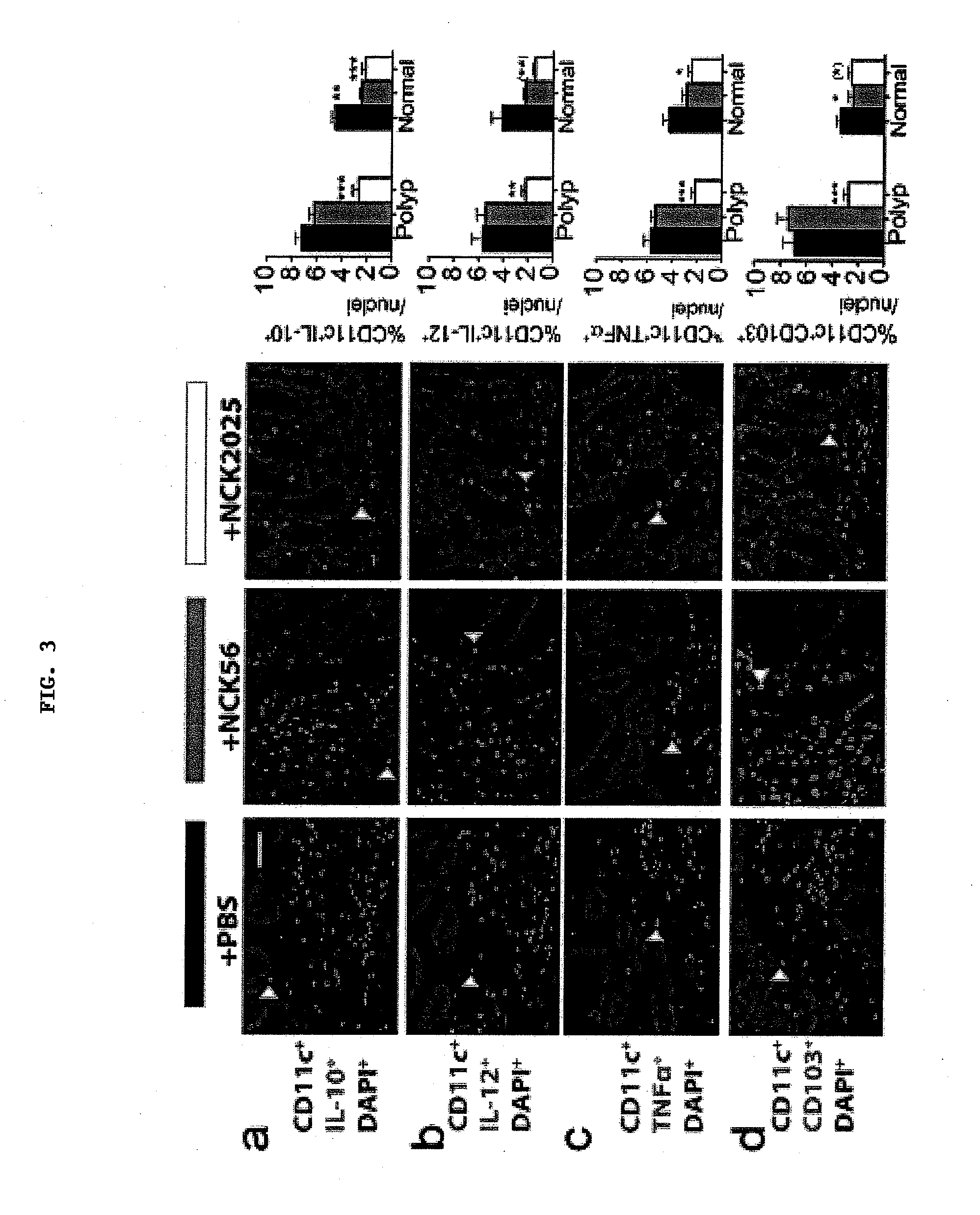Methods to reduce polyposis and colorectal cancer
a polyposis and colorectal cancer technology, applied in the field colorectal cancer, can solve the problems of unclarified interactions between the components of the gut microflora and polyposis associated colorectal cancer, and achieve the effects of reducing or inhibiting polyposis, promoting the desired therapeutic response, and reducing the display of lipoteichoic acid
- Summary
- Abstract
- Description
- Claims
- Application Information
AI Technical Summary
Benefits of technology
Problems solved by technology
Method used
Image
Examples
example 1
[0090]A colonic polyposis mouse model was utilized to investigate the role of the gut microbiota in the control of gastrointestinal immune balance. To analyze the immunomodulatory properties of NCK2025, polyp-ridden mice of 5 months of age were orally treated daily with doses of 5×108 cfu of NCK2025, or were fed water as a control for 4 weeks. To specifically address the role of LTA, a third group of mice was treated in a similar manner with the parental L. acidophilus, NCK56. After 4 weeks of treatment, all mice were euthanized and analyzed. There was little change in polyposis in NCK56 treated mice as compared to control PBS treated mice. By contrast, NCK2025-treated mice had a reduced number of polyps in the small intestine (FIG. 1A) and significantly decreased numbers of colonic polyps (FIG. 1A, B). Mitotic and apoptotic activities were significantly reduced in polyps of NCK2025-treated mice compared to PBS- and NCK56-treated mice (FIG. 1C, D). Together, these observations demon...
example 2
[0091]Immunofluorescent staining of paraffin sections throughout the colon was performed to provide evidence for dampened inflammation in NCK2025-treated mice. Previously, the expansion and activation of mast cells was reported in adenomatous polyps along with evidence for their tumor-promoting role (Khazaie et al. (2011) Cancer Metastasis Rev 30:45). To evaluate the impact of the gut microflora on inflammation, intrapolyp mast cell densities were quantified in mice having polyposis treated with NCK2025, compared to mice fed the parental L. acidophilus, NCK56. Significant decreases in the intrapolyp mast cell count were observed in mice fed NCK2025 reaching levels comparable to those in the colons of mice with no polyposis, but little change was found in NCK56-treated mice compared to PBS-treated mice (FIG. 2A, D). Polyps are infiltrated with relatively high densities of macrophages, neutrophils, and myeloid derived suppressor cells, therefore, quantified the impact of treatments on...
example 3
[0093]Previously we reported that inflammation associated with polyposis becomes systemic in mouse models of hereditary polyposis, which develop splenomegaly and elevated levels of serum pro-inflammatory cytokines (Gounaris et al. (2008) PLoS One 3: e2916). Aged polyp-ridden mice also developed splenomegaly (FIG. 5A). Treatment with NCK2025 caused significant reductions in spleen size while treatment with NCK56 showed similar trends, which however were not statistically significant (FIG. 5A). Reduction in spleen size correlated with increased relative frequencies of CD4 effector T-cells and reduced Tregs (FIG. 5B), and reduced macrophages and granulocyte in the spleen (FIG. 5C). Similar but not significant trends were also seen in the MLN (FIG. 5 B, C). These changes corresponded to significant drops in levels of IL-10 as well as pro-inflammatory cytokines but increase in IL-22 in the serum (FIG. 6). Single cell suspensions were filtered (40 μm), and red blood cells (RBC) were lysed...
PUM
| Property | Measurement | Unit |
|---|---|---|
| Size | aaaaa | aaaaa |
| Density | aaaaa | aaaaa |
| Acidity | aaaaa | aaaaa |
Abstract
Description
Claims
Application Information
 Login to View More
Login to View More - R&D
- Intellectual Property
- Life Sciences
- Materials
- Tech Scout
- Unparalleled Data Quality
- Higher Quality Content
- 60% Fewer Hallucinations
Browse by: Latest US Patents, China's latest patents, Technical Efficacy Thesaurus, Application Domain, Technology Topic, Popular Technical Reports.
© 2025 PatSnap. All rights reserved.Legal|Privacy policy|Modern Slavery Act Transparency Statement|Sitemap|About US| Contact US: help@patsnap.com



